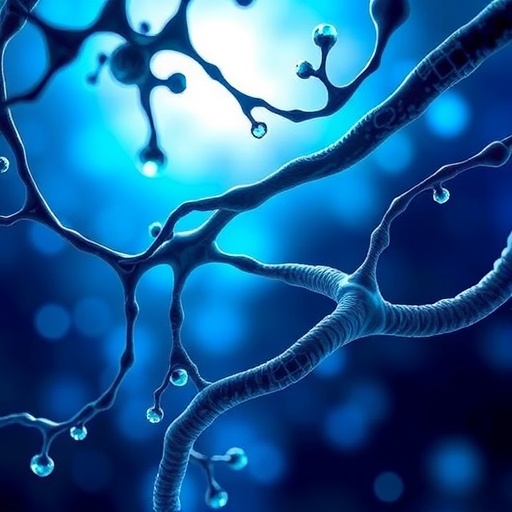Paper Published by Le Bonheur Children’s Physician in the Journal of Invasive Cardiology

Credit: Le Bonheur Children’s Hospital
Interventional cardiologists should prioritize the conservation of medical resources, minimization of potential COVID-19 exposure and reallocation of resources, according to a paper published on April 9 in the Journal of Invasive Cardiology.
In the article, Le Bonheur Children’s Hospital and the University of Tennessee Health Science Center Interventional Cardiologist Shyam Sathanandam, MD, suggests that catheterization laboratories should develop strategies for patient care by preserving and repurposing resources.
Sathanandam published the work after issuing a web-based survey to 56 unique U.S. centers, with the objective of describing current practice patterns and recommending potential resource allocation for congenital cardiac catheterization during the COVID-19 pandemic.
“We are faced with a fundamental question,” said Sathanandam, who serves as the medical director of Le Bonheur Children’s Interventional Cardiac Imaging and Interventional Catheterization Laboratory. “How can we, as pediatric and congenital interventional cardiologists, continue to care for patients who require intervention, while also being good stewards of limited medical resources and maintain an appropriate level of preparedness when we are uncertain about how this pandemic will affect our discipline?”
Medical Resource Utilization and Case Selection
The majority of survey respondents felt they had sufficient PPE to care for COVID-19 positive patients or PUIs. However, limited access to PPE and ventilators necessitates postponing elective catheterization cases to assist with the preservation of medical resources. The paper recommends using a multi-disciplinary clinical leadership team to triage case priority and timing – at present, only one-half of the reporting U.S. programs employed this strategy to review case selection.
While responding centers have canceled elective procedures with relative uniformity, centers in counties with 2,000 or more COVID-19 cases were more likely to delay certain cases including PDA closures in premature infants, pre-Glenn catheterization and coarctation stenting.
Minimizing Exposure
The responses suggest that many programs may not be adequately prepared for a surge of COVID-19 positive patients. Centers located in areas with higher number of COVID-19 cases have been more involved in a simulation of donning and doffing PPE equipment than low-prevalence centers (46.7% vs. 10.3%). Only 10.8% had converted a Cath lab to a negative pressure room for potential COVID-19 positive patient or PUI. The majority (65%) were only testing for COVID-19 prior to cardiac catheterization if the patient was symptomatic. Only 15% tested all patients prior to aerosol-generating procedures in the Cath lab.
However, responding centers were employing various strategies to reduce staff exposure to COVID-19.
- 31% did not allow fellow participation in cardiac catheterization cases.
- 76% minimized staff exposure through changes to the work and call schedule.
- 10.8% reassigned staff to provide clinical services outside the typical scope of practice.
- 41.7% had discussed or planned reassignment.
In addition, many facilities are minimizing staff presence in the Cath lab before and after airway manipulation in order to reduce potential exposure.
Resource Reallocation and Potential Repurposing
The primary way responding centers are conserving resources is by decreasing elective cases. “For subspecialists like pediatric interventional cardiologists, this raises the question of how best to utilize our clinical skills if the typical volume of patients with congenital heart is reduced,” said Sathanandam.
This decision will vary by pediatric institution and may depend on geographic proximity to and relationship with adult centers. Pediatric interventional cardiologists will likely be deployed for services outside of the Cath lab depending on where resources are strained whether inpatient services, ICUs, emergency departments or vascular access teams.
###
View the paper here: https:/
About Le Bonheur Children’s Hospital
Le Bonheur Children’s Hospital in Memphis, Tenn., treats children each year through community programs, regional clinics and a 255 bed state-of-the-art hospital. Le Bonheur serves as a primary teaching affiliate for the University Tennessee Health Science Center and trains more than 350 pediatricians and specialists each year. Nationally recognized, Le Bonheur is ranked by U.S. News & World Report as a Best Children’s Hospital.
For more information, please call (901) 287-6030 or visit lebonheur.org. Connect with us at facebook.com/lebonheurchildrens, twitter.com/lebonheurchild or on Instagram at lebonheurchildrens.
About The University of Tennessee Health Science Center
As Tennessee’s only public, statewide, academic health system, the mission of the University of Tennessee Health Science Center is to bring the benefits of the health sciences to the achievement and maintenance of human health through education, research, clinical care, and public service, with a focus on the citizens of Tennessee and the region. The main campus in Memphis includes six colleges: Dentistry, Graduate Health Sciences, Health Professions, Medicine, Nursing and Pharmacy. UTHSC also educates and trains medicine, pharmacy, and/or health professions students, as well as medical residents and fellows, at major sites in Knoxville, Chattanooga and Nashville. For more information, visit http://www.
Media Contact
Sara Burnett
[email protected]
Original Source
https:/





